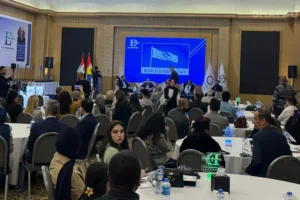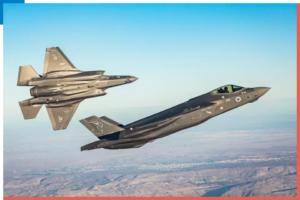
Shafaq News
Baghdad marks 1,263 years since its founding with an
unusually reflective mood, confronting how a city conceived as the “City of
Peace”—once the intellectual heart of a global empire—grapples with today’s
political strains, social divisions, and urban pressures while searching for a
credible path forward.
Founded in 762 CE by Abbasid Caliph Abu Ja‘far
al-Mansur, Baghdad emerged from an exacting imperial blueprint rather than
organic growth, its circular layout—unmatched in global urban
history—expressing a worldview that fused governance, scientific inquiry, and
cosmology at the center of an ascendant empire.
From the City of Peace to a Global Center
Within a few decades, Baghdad evolved into a dominant
seat of medieval scholarship, attracting physicians, translators, astronomers,
mathematicians, and philosophers from Persia, Central Asia, Anatolia, and the
Mediterranean to its academies and translation houses, where vast libraries and
research institutions forged scientific traditions that stretched far beyond
the region.
Abbasid political fragmentation eventually weakened
central authority, yet cultural life endured until the Mongol invasion of 1258
shattered the city’s intellectual infrastructure, destroyed its libraries, and
leveled entire districts, leaving a trauma that still shapes Baghdad’s
collective memory even as later dynasties rebuilt portions of the capital
without restoring its original global prominence.
Shifting Empires and Making of Modern Baghdad
Ottoman administration from the sixteenth century
onward, followed by British influence in the early twentieth century, reshaped
Baghdad’s institutions and demographics. By the time Iraq entered statehood,
the city had become a multi-ethnic commercial hub where Muslims, Christians,
Jews, Kurds, Armenians, and others played formative roles in the creation of
modern Iraq.
After the 1958 political transition, Baghdad expanded
rapidly through new universities, cultural centers, and modernist architecture
that redefined its skyline and reinforced its status as a leading cultural
capital of the Arab world. Yet decades of wars, sanctions, and political
upheaval eroded infrastructure, weakened public administration, and strained
social cohesion.
After 2003: Conflict and Reconstruction
The period following 2003 transformed Baghdad more
profoundly than any era since the Mongol assault, as insurgency, sectarian
bloodshed, and mass displacement redrew demographic lines, fractured municipal
boundaries, turned public spaces into targets, and inflicted severe damage on
essential services and administrative systems.
Speaking to Shafaq News, Deputy Minister of Culture,
Tourism, and Antiquities Fadel Al-Badrani described those years as “a
deliberate effort to undermine Baghdad’s civilizational depth,” recalling
extensive destruction of museums, archives, and heritage sites.
He argued that destabilizing groups attempted to
“storm Baghdad in the manner of Hulagu—through killing and destruction,” but
maintained that the city’s cultural memory and intellectual networks helped it
endure until ISIS’s defeat in 2017 initiated a slow, uneven recovery.
For Al-Badrani, Baghdad’s selection as Arab Tourism
Capital for 2025 and Islamic Culture Capital for 2026 reflects its enduring
cultural stature.
A Social Fabric Rewoven
The city’s demographic landscape shifted sharply
between 2003 and 2008 as sectarian conflict triggered one of Iraq’s largest
displacement waves. Today, roughly 8.5 million residents occupy a capital where
the Ministry of Planning estimates for 2024 show Shiite Muslims comprising
80–82 percent of the population and Sunnis 17–19 percent, patterns reflected in
neighborhoods such as Sadr City, Kadhimiya, and Hurriya on one side and
Adhamiyah, Dora, and parts of Ghazaliya on the other.
Kurdish communities maintain a strong presence in
Karrada and New Baghdad; Turkmen families live across several districts; and
the Christian population—once central to Baghdad’s commercial and cultural
life—has declined from more than 50,000 in the late 1990s to fewer than 10,000
today. Armenian churches continue to operate despite smaller congregations,
while the Sabean-Mandaeans, now only a few hundred, remain known for their
artisanal trades. Yazidi families displaced after 2014 have also become more
visible.
Between Two Eras: Baghdad’s Evolving Role
Debates over Baghdad’s current role dominate
conversations among officials and intellectuals. Politician Mithal Al-Alusi
told our agency, “The city’s influence rests not only on political institutions
but on its enduring literary, scientific, and human legacy,” contending that
capitals thrive through openness, stability, and internal cohesion—conditions,
he argued, Baghdad must strengthen to project cultural weight regionally and
internationally.
Al-Alusi also warned that the political and security
foundations needed to complete this transformation remain fragile, reflecting a
broader sentiment that Baghdad stands between the glow of its historic
brilliance and the realities of a state still rebuilding.
Achievements and Enduring Challenges
Meanwhile, writer Shawqi Kareem Hassan views Baghdad
as exceptional among Arab cities because of its symbolic and cultural depth,
noting improved security, the gradual reactivation of institutions, the revival
of Al-Mutanabbi Street, and expanding telecommunications and civic engagement.
Still, he pointed to persistent challenges, which,
according to him, include the absence of an integrated urban plan, severe
traffic congestion in the absence of a modern transportation network, weak
municipal administration, deteriorating public services, and limited
protections for historic architecture.
“These factors leave Baghdad at a crossroads, with a
past that grants legitimacy and a present that remains unsettled,” Hassan told
Shafaq News.
Reclaiming a Place in the World
Speaking to our agency, strategic expert Ahmed
Al-Sharifi linked Baghdad’s potential resurgence to leadership capable of
converting its historic weight into contemporary relevance, arguing that a city
that once shaped global knowledge now requires leaders who grasp regional
dynamics and recognize that influence in the modern world emerges from
strategic vision and institutional strength, because “leadership builds
individuals, and through them, nations and civilizations.”
A City Still Writing Its Story
Every November 15 reminds Iraqis that Baghdad became
the cultural and scientific nucleus of an empire, and today it remains both
witness and survivor, carrying a golden age in memory while confronting present
demands for effective governance, coherent urban planning, and preservation of
its layered heritage.
Read
more: Discover Iraq: Baghdad, a city shaped by conflict and enduring hope
Written and edited by Shafaq News staff.





